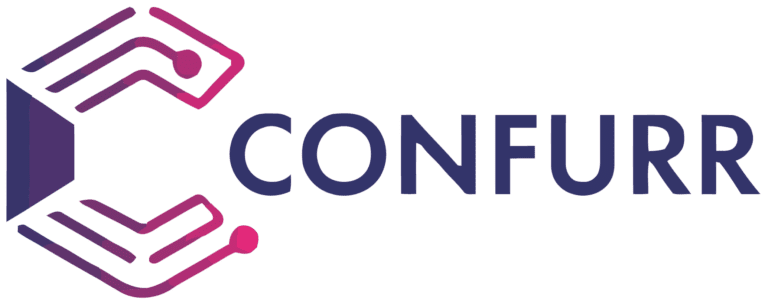Two Minutes To Understand How To Integrate Your Phone System With Microsoft Teams
4 Mins Read

-
- Multiple advantages for users and businesses
-
- Benefit from advanced phone capabilities
-
- A rapid ROI
-
- More episodes
Did you know that almost nine out of ten Microsoft Teams customers are planning to opt for a third-party phone solution to manage their phone calls? The phone remains an essential communications channel, and most businesses prefer to rely on a specialist supplier that provides advanced features and commits to the quality and reliability of the communications rather than settling for Microsoft’s limited phone capabilities.
But the use of different tools does not have to make users’ work more complicated. The way in which systems are integrated is essential. In this video, Bryan Peddie, Product Marketing Manager, explains how best to integrate your phone system with Teams and gives some examples of automated functions that will increase productivity.
Multiple advantages for users and businesses
As the research and advisory company Metrigy explains in a recent study, combining Microsoft Teams with the phone services of a third-party UCaaS (unified communications in the cloud) provider brings advantages that include reduced costs, increased reliability and a wider range of phone capabilities. Practical evidence of these benefits: 88% of businesses that have already integrated these systems do not plan to change the way they operate, even if they use Microsoft Teams for messaging and video.
It may seem surprising that using an additional tool can ultimately lead to an increase in productivity, but this is all about introducing UCaaS and its advanced integration capabilities into a different working environment. If the integration is carefully planned and the ergonomics are tried out with users, the systems can be used seamlessly and almost transparently.
Let’s take one example. If RingCentral MVP is integrated with Microsoft Teams, when you are working in your collaboration tool, you simply click on a contact to start a phone call. You don’t need to leave the interface.
In technical terms, the integration is also very simple because it does not require any special equipment or an additional application that has to be dealt with. Another benefit is that leaving your phone system in the hands of a specialist means that you can ask your provider to manage the migration of your PBX to the cloud, taking into account specific configurations and even existing desk phones. RingCentral manages migrations of this kind on a daily basis and also supplies provider connections.
Benefit from advanced phone capabilities
Businesses that integrate specialist phone solutions will also benefit from features like voicemail, filtering and monitoring calls and managing call queues. RingCentral MVP also makes it possible to integrate phone directories and calendars which allows you to provide better customer service. The presence synchronisation between Teams and RingCentral also means that you can find out in real time whether your colleagues are available and decide whether or not to transfer an important call to them. For the customer or the employee who is calling, it is always a more pleasant experience to find this out in advance rather than to be transferred to a phone that no one answers.
With its latest integration, RingCentral also provides its phone capabilities into the Microsoft Teams mobile app.
The important capabilities also include analytics. Analysing communications is a key aspect of managing a business. By integrating your system with RingCentral MVP, you will have access to all the advanced RingCentral analytics features, either IT or line of business, directly from Teams.
A rapid ROI

The majority of organisations are aware of the value generated by communications and collaboration solutions. They measure this value in terms of improving productivity, reducing costs and revenue increase. In its study, Metrigy shows that 52.3% of businesses have seen a rise in productivity, 36.8% a fall in global expenditure and 31% a growth in revenue.
By investing in a UCaaS solution such as RingCentral MVP for your phone system which is integrated with your Microsoft Teams environment, you will notice an increase in value on a number of levels:
-
- The gains in terms of the availability and reliability of the communications will help to prevent calls being missed and therefore potential revenue being lost. Microsoft Teams commits to an uptime of 99.99%, whereas RingCentral undertakes to provide 99.999% availability. This difference, which may seem very small, has major consequences in reality. It means 5.26 minutes of downtime per year, compared with 52 minutes for a supplier offering 99.99%.
-
- Integrating advanced phone capabilities, such as call queue management, voicemail and information about the presence status of other employees, brings significant improvements in the user experience.
-
- Finally, users who benefit from a simple, seamless integration can save time and be more productive.
Last but not least, cost reduction is an important differentiating factor. The investment in this integration is lower because, with RingCentral MVP, you do not need to buy Teams Phone or E5 licences.
Don’t miss the other episodes!
Five videos, five questions and two minutes to understand everything and take your business communications to the next level:
Episode 1: How unified communications and AI can facilitate new working models
Episode 2: How to guarantee a high-quality customer experience
Episode 4: How to manage your communications system more effectively with advanced analyses
Episode 5: How to ensure that your business communications system is reliable
Originally published Nov 08, 2023, updated Nov 29, 2023
